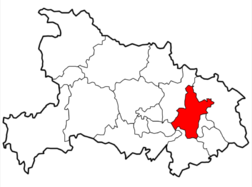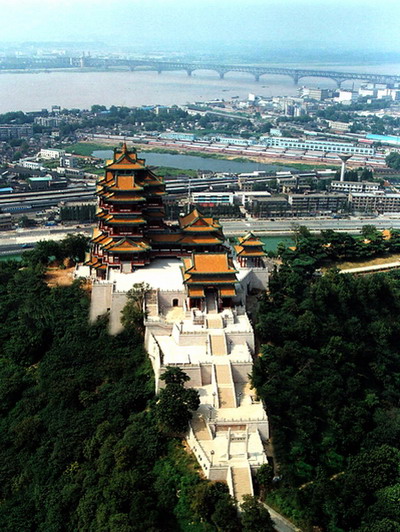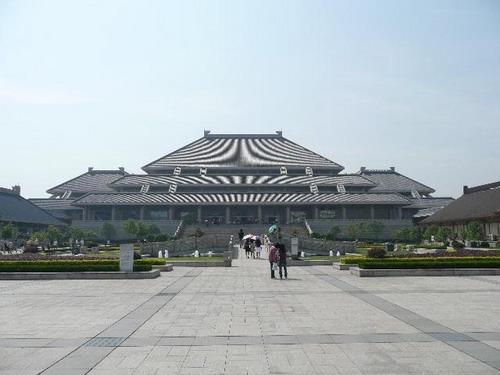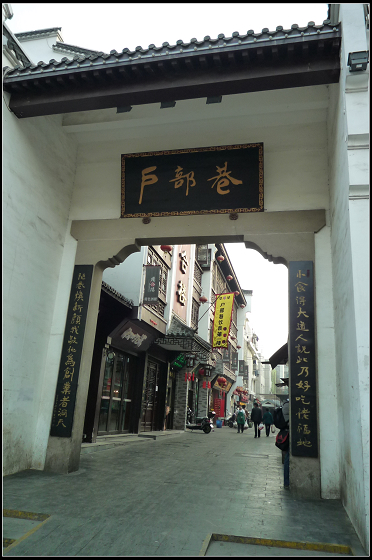| About Hubei | Culture & Arts | ||
| Attractions | Routes | ||
| Dining | Shopping | ||
| Hotels | Transportation | ||
| Entertainment | Travel agencies |
Jingshan to attract Wuhan tourists
Storytelling queen
For the love of Wuhan
Dangyang to promote tourism


Wuhan
(travelchinaguide.com, wikipedia)
Updated: 2011-11-21

Wuhan, the capital city of Hubei province in central China, is situated on Jianghan Plain, a river-crossed fertile land created by the Hanjiang River joining the Yangtze River. Divided by the Yangtze, the city is known as the 'Three Towns of Wuhan' with Hankou and Hanyang on the west bank and, Wuchang on the east.
"I like to eat the delicious Re Gan Mian noodles; I like to wear the cotton jacket I bought in Hanzheng Street; I like to live near the flourishing Liuduqiao area; I like to cross each bridge over the Yangtze River," writes a Chinese Wuhan resident. From this, you can see the locals' affection on this charming city.
Wuhan is a city with both an ancient history and a thriving present. Historic relics excavated from ancient tombs tell the city's long history dating back 3,500 years. In the period of Pre-Qin Dynasty (770 - 221 BC), this was the land of the State of Chu (one of the seven warring states before Qin, in China's first feudal dynasty) and was the cradle of the brilliant Chu Civilization. Starting here, merchants followed the great Yangtze River and lake network to expand businesses throughout the entire country.
In the Qing Dynasty, Hankou became one of the four best-known towns in the country. For centuries, this city has been the center of trade and transportation in central China. Today it is an important hub in central China and a feature of Yangtze River cruises for sightseers and businessmen traveling from Sichuan to Shanghai or Hong Kong.
Wuhan is the place to find both history and natural wonders. Hubei Provincial Museum and Yellow Crane Tower are two places to appreciate ancient Chinese history and culture. In the museum, chimes excavated from tombs reveal the incredible achievements of ancient people in music, acoustics and metallurgy. The classic poems and inscriptions on the tower, (although unrecognizable to most Westerners) can inspire your spirit as you pretend to be a poet with a bird's-eye view of the river from the tower window. In addition, the famous Villa of Chairman Mao Zedong on the scenic bank of East Lake, Wuchang, is an ideal place for westerners to learn more about him.
 |
|
Yellow Crane Tower |
 |
| Hubei Provincial Museum |
Two famous places for local Wuhan snacks are Ji Qing Jie night street and Hu Bu Xiang breakfast street. Ji Qing Jie features all kinds of special foods plus entertainment at table by classical folk musicians. Snacks tops on travelers' list include Re Gan Mian, Steamed Wuchang Fish and Fried Bean Sheets. Street stalls in Hu Bu Xiang support the local habit of Guo Zao (having breakfast at street stalls with their cheap tasty food and vendors' skillful performance). Benefited from rivers around, Wuhan Cuisine earns its reputation especially from fish. Chinese Chairman Mao Zedong in his poem wrote: "I have just drunk the waters of Changsha come to eat the fish of Wuchang." Streamed Wuchang Fish is a must for epicures.
 |
| Hu Bu Xiang Street, a famous places for local Wuhan snacks |
Time-honored Hanzheng Street and the bustling walking street near Hanjiang Road are two choices for shopping lovers. Comb through dazzling shops housed in traditional Chinese buildings and find special gifts for friends and family. Even the most fastidious shopper will be satisfied.
Wuhan is also a city with impressive nightlife. Today people have more entertainment choices than ever before. Instead of watching TV at home, locals go to the cinema with friends, or spend the evening at disco parlors, karaoke rooms, bars and pubs and other interesting places.
Put Wuhan on your itinerary; you will not be disappointed.